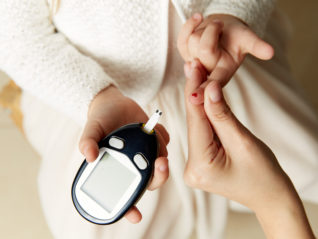
by Bianca Garilli, ND
It has been said that an ounce of prevention is worth a pound of cure. In the case of the growing obesity epidemic and the concurrent increase in insulin resistance (IR) and type 2 diabetes (T2D), it is important to understand the relationship between obesity and IR, and to identify biomarkers which can aid in the identification and prevention of these conditions.
Inflammation is thought to be a major driver of the IR process, with evidence pointing towards dyslipidemia as a major underlying cause. This is often referred to as the hypothesis of lipotoxicity. The lipotoxicity hypothesis states that an overabundance of blood lipids eventually leads to the inability of adipocytes to store additional fat; excess lipids are then shuttled into other non-adipocyte tissues, including hepatocytes, resulting in inflammation and increased risk of IR.1 Not all people with obesity, however, will go on to develop IR. Researchers have postulated that development of IR in those with obesity may be modulated by the types of lipids in circulation as well as other epigenetic input.
A research publication in The Journal of Clinical Endocrinology and Metabolism analyzing data from the Western Australian Pregnancy Cohort (Raine) study leveraged metabolomics to elucidate the relationship between lipidomic markers and their association with obesity, IR and T2D.2 The Raine study is one of the largest prospective cohort studies on pregnancy, childhood, adolescence and early adulthood in the world. This study enrolled 2900 pregnant women in Australia from 1989 to 1991. The 2686 live birth participants were evaluated and followed up serially up to 20 years of age.
Various measurements were collected from participants,including markers of obesity and IR such as body mass index, waist circumference, glucose, insulin, and homeostasis model assessment of insulin resistance (HOMA-IR).2 To investigate which lipidomic markers were associated with obesity, IR and T2D, 175 different lipid metabolites from 1011 of these young adult subjects were included in a complex set of analyses.2 The list of lipid metabolites reviewed included 32 non-esterified fatty acids (NEFAs), 14 lysophosphatidylcholines (LPC), 3 lysophosphatidylethanolamines, 43 phosphatidylcholines (PCaa), 37 acyl-alkyl-phosphatidylcholines, and 47 sphingomyelins (SMs).
Certain lipidomic biomarkers were associated with obesity and IR:2
- Waist circumference was positively associated with 7 specific SMs and 5 diacyl-phophatidylcholines and negatively associated with 2 LPC
- HOMA-IR was negatively associated with 2 diacyl-phosphatidylcholines and positively with 1 LPC and 1 diacyl-phosphatidylcholine
- SM, PCaa and LPC were all associated with obesity and IR development; this was independent of LDL and and HDL cholesterol levels. The authors note the importance and statistical rigor of controlling for effects of LDL-C and HDL-C in obesity and IR.
This is the first study to examine the potential relationships of lipidomics in obesity and IR. The study results suggest there is a weight status-dependent (obese vs. normal weight) mechanism mediating the development of IR. The key metabolite identified for this mechanism in non-obese IR was LPC C14:0.
Further research is needed to understand the implications of lipidomic variances found between those with obesity and those of normal weight and how epigenetic factors may influence the production of SM and LPC in both obese and normal weight individuals. Furthermore, the study’s authors encourage future research into the metabolites involved in sphingolipid metabolism and how nutrition, particularly a diet high in saturated fats, may affect IR in obese and normal weight individuals.2
Why is this Clinically Relevant?
- Obesity does not guarantee progression to IR
- Lipid composition plays a role in risk of IR and T2D
- Dietary fat types and quantity may impact risk of IR through the lipotoxicity hypothesis
- Future research is needed to inform lipidomic testing to identify those at higher risk for IR and T2D to ultimately help implement preventative therapies
- Virtue S, Vidal-Puig A. Adipose tissue expandability, lipotoxicity and the metabolic syndrome–an allostatic perspective. Biochim Biophys Acta. March 2010;1801(3):338-49.
- Rauschert S, Uhl O, Koletzko B, et al. Lipidomics reveals associations of phospholipids with obesity and insulin resistance in young adults. J Clin Endocrinol Metab. 2016;101(3):871-879.



